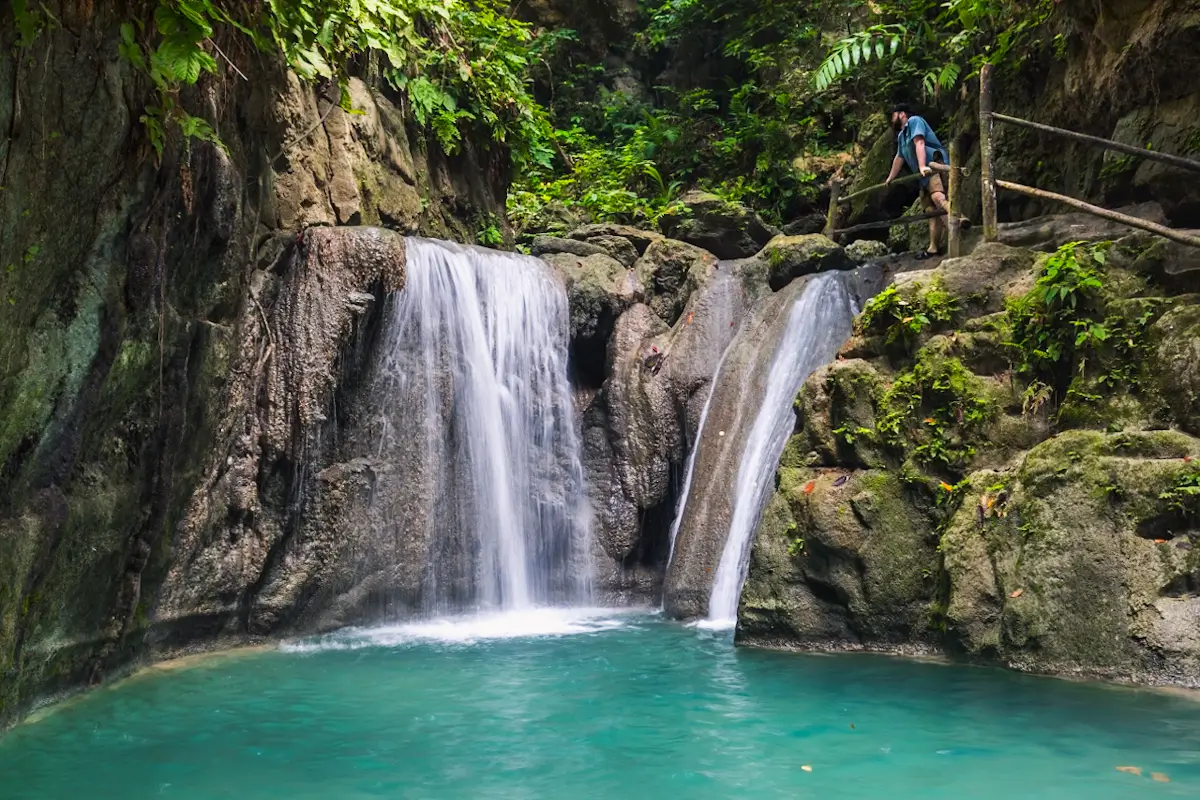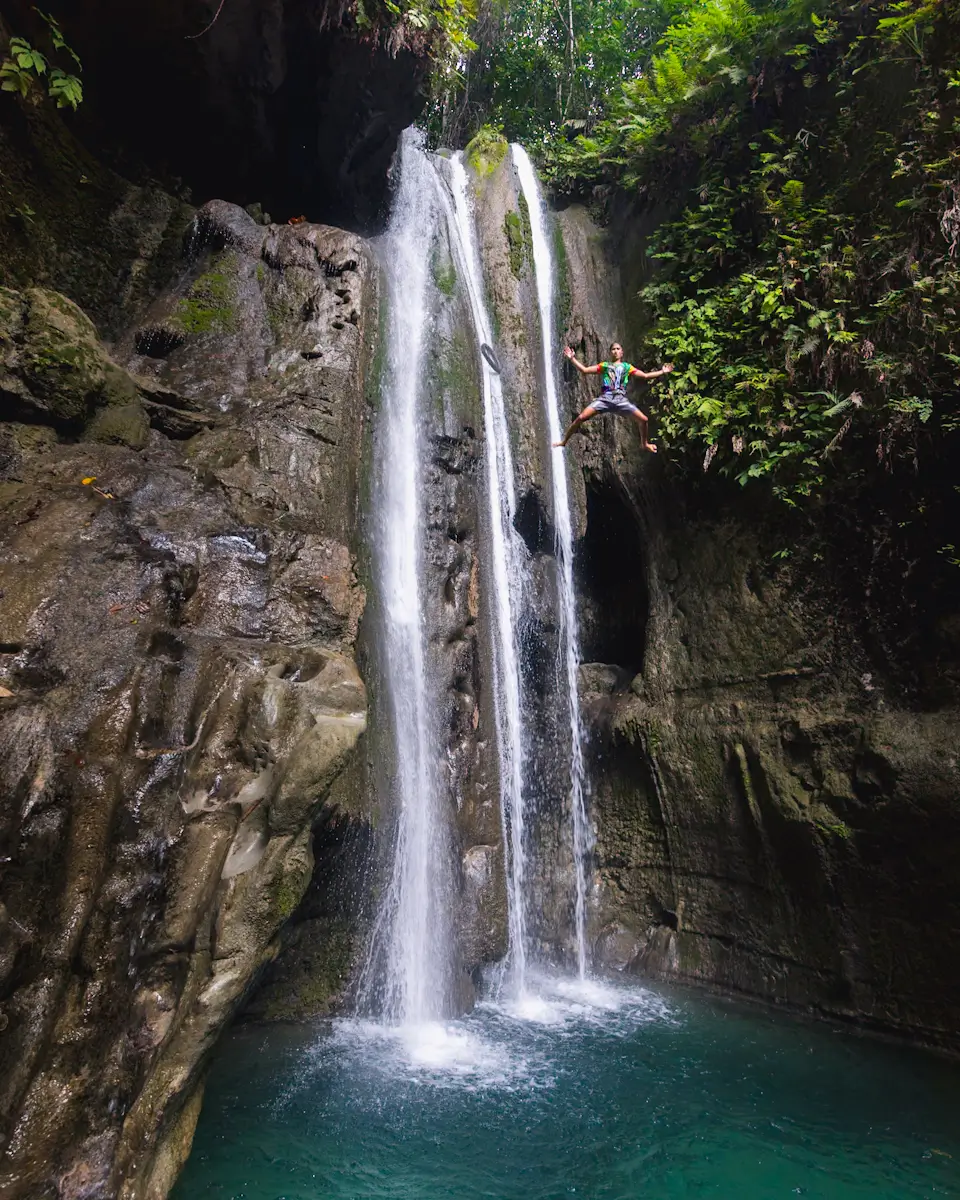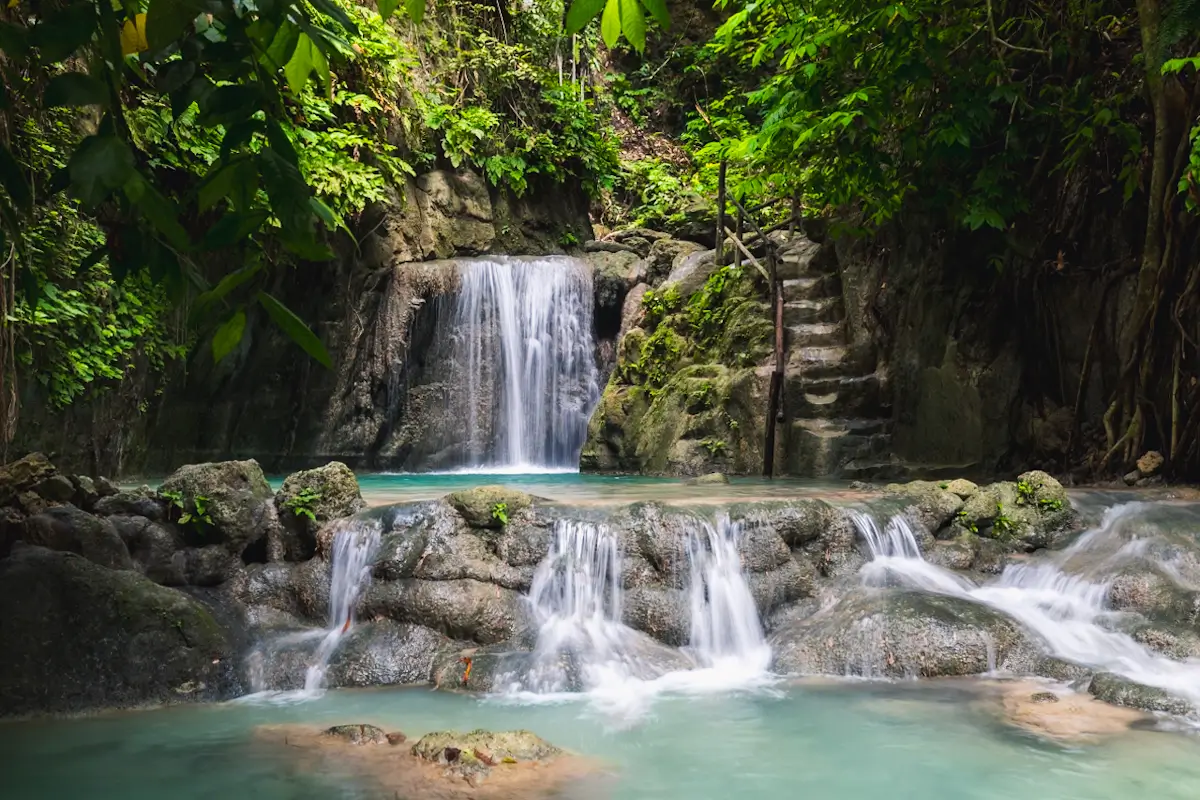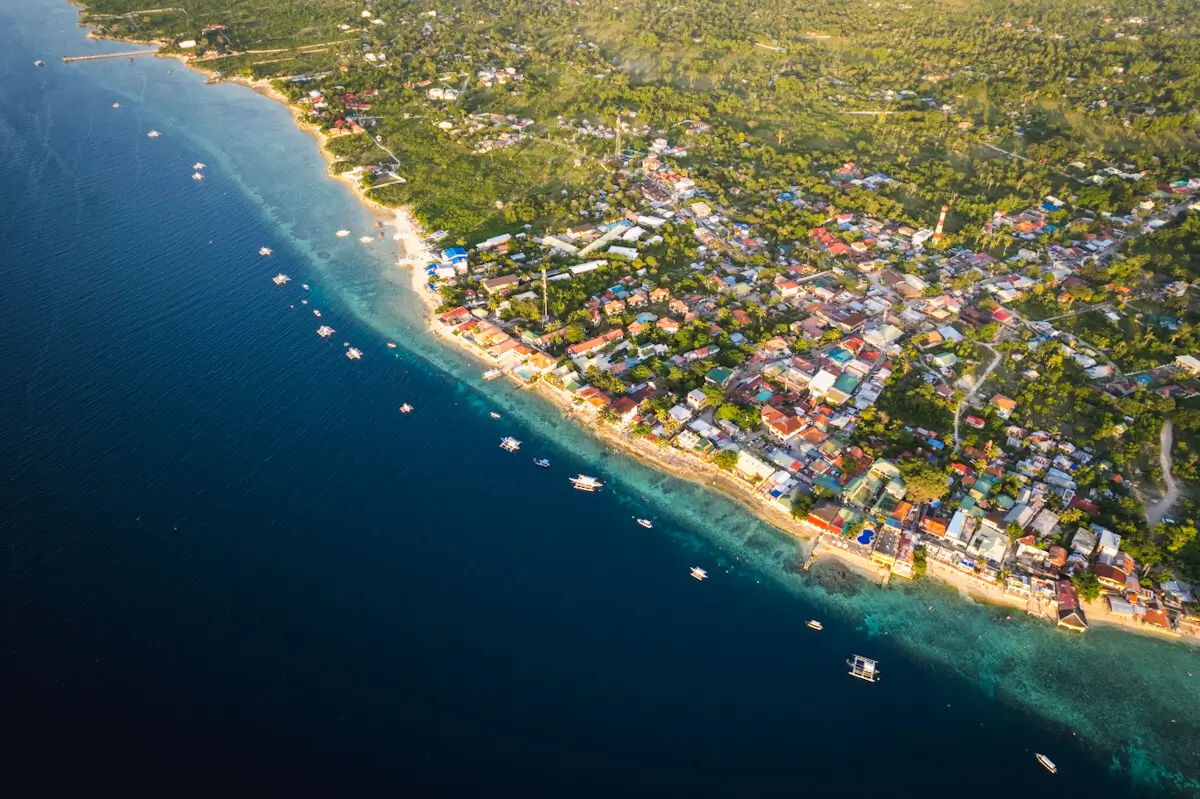Binalayan Falls is one of the best cliff-jumping waterfalls in the South of Cebu, and it’s one of the few in the area you might just have all to yourself.
Binalayan Falls is located close to several other waterfalls in Cebu, and I often visit four or five of them in one day. Binalayan is consistently my favourite though – the walk to the waterfall through beautiful forest is immensely enjoyable, and in my experience the guides here are some of the friendliest of any waterfall in the area. I’ve visited this waterfall multiple times, and it’s one that I’m sure I’ll return to again.
Continue reading this blog post for all the necessary information to visit Binalayan Falls for yourself. I’ve shared where to find it, how to get there, the entrance fee, and more.

About Binalayan Falls
Binalayan Falls is located at the end of a short canyon, where three beautiful distinct ribbons of water cascade down the cliff face. What’s especially great about Binalayan are the multiple spots to jump from the falls down into the deep blue pool below. Jump from the highest point if you dare.
The walk up along the creek to Binalayan Falls takes only about 20 minutes, and leads through very beautiful jungle. What I really enjoyed about both the trail and the waterfall is that human impact has been left to a minimum. Stairs and handholds have been carved, and bamboo railings have been installed where necessary, but I would never describe it as overdeveloped.

Binalayan Falls Entrance + Guide Fees
The entrance fee for Binalayan Falls is 60 PHP per person, and there’s an additional 10 PHP parking fee. Taking a local guide is mandatory. Guides live in the local community and rely on tips for income, as they don’t receive a share of the entrance fee. A typical tip ranges from 50 PHP to 100 PHP, but consider giving more if your guide went above and beyond. Given how affordable the entrance fee is for Binalayan compared to some of the other waterfalls in the area, it’s definitely worth being generous.

How to Get to Binalayan Falls
Binalayan Falls is located in the south of Cebu, close to other famous Cebu waterfalls like Dao Falls, Aguinid Falls, and Inambakan Falls. This group of waterfalls is about an hour and a half south of Moalboal.
If you’re staying on Cebu and planning on exploring all the waterfalls and beaches located in the south half of the island, Moalboal is the best place to base yourself. It’s easy to get there from Cebu City by bus or private transfer, and the town has plenty of restaurants, hotels, and activities.
From Moalboal, head south on Santander – Barili – Toledo Road for 55 km. The ride down Cebu’s coastline is absolutely spectacular, and a can’t-miss if you’re staying in Moalboal. It’s possible to ride down in the morning, check out as many waterfalls as you’d like, and head back up, but it’s also possible to continue on to Santander or Oslob before looping back up to Moalboal, which is one of my favourite ways to enjoy Cebu.

Tips for Visiting Binalayan Falls
Practice Leave No Trace principles by carrying out all your garbage and avoiding any actions that could harm the environment like leaving graffiti. That’s just trashy and gross.
As a visitor, you are responsible for helping to protect Binalayan Falls. Showing care for preserving natural attractions helps keep these sites pristine and also encourages locals to prioritize sustainable practices. Always pay entrance and guide fees—these often fund local conservation and create jobs for the local community. Go a step further by giving an additional donation, explicitly stating that it’s for conservation. Even a small amount that might not be significant to you can mean a lot to the locals. Asking how fees or donations are used for preservation shows locals that tourists value these efforts and motivates them to continue protecting the area.
Locals try to give you what they think you want in order to earn a living from tourism, and they will happily cut down trees, exterminate wildlife, pour concrete, and build trashy overpriced restaurants when they think that’s what tourists want most. You can reshape this perception—show through your words and spending that you value the natural beauty and authenticity of the area over commercialization.

When to Visit Binalayan Falls
The best time to visit Binalayan Falls is during the dry season, which lasts from December to May. This period offers warm, sunny weather with fewer rainy days, making it ideal for outdoor activities and exploring the island. If you want to see the waterfall at its peak though, it’s best to visit at the start of the dry season, when it’s still benefitting from the past six months’ worth of rain.
Year-round, temperatures in the area stay consistently warm, typically around 25°C to 32°C, so you can expect a tropical climate no matter when you visit. If you plan to travel outside the dry season, be ready for moderate but steady rainfall and pack some rain gear to stay comfortable during your trip.
Like any waterfall in the area, Binalayan Falls sees most of its visitors around noon, meaning your best chance of having the waterfall to yourself is to get here early. That said, from talking to the guide it sounds like traffic stays relatively low in general, so you might get lucky even later in the day.

